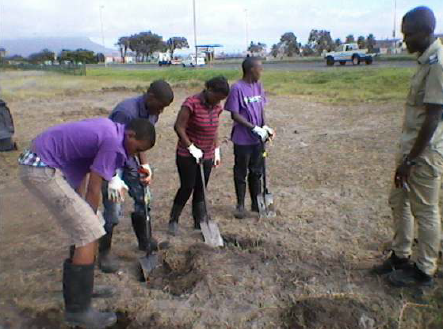
Removal of Bulrushes
1st Ikhwezi Scout Group embarked on a project named Removal of Bulrushes, the project took place at Edith Stephen Wetland Park in Cape Town. Edith Stephens Wetland provides an ideal opportunity to introduce community and Scouts to the natural environment and biodiversity. They offer a hands-on environment for outdoor education that complements Scout-based activities. The Wetland provides local residents of Manenberg and Gugulethu Townships with conservation, recreation and educational activities. The Park has more than 80 species of plants, several reptiles and birds species. About 65 species of indigenous plants grow in this small urban nature reserve, and 8 of these are on the Red List as alien vegetation. The purpose of this project was to educate the Scouts and the community on biodiversity, climate change, removal of non-native species and planting of indigenous plants at Edith Stephens Wetland. When 1st Ikhwezi Scout Group heard that the wetland is invaded with species that threatens the eco-system in the area. They took a decision to embark on this great project led by Group leader Albert Ntunja, Luzann Isaacs (of Edith Stephens Wetland) and Scouter Viwe Benxa. The Group planned activities that included conducting a two days’ workshop on endangered and alien plants.
Removal of about 150 bulrushes plants from the wetland and planting of about 50 restios plants. Scouts learnt about
habitat destruction, invader pathogens and ecosystem service destruction. Viwe Benxa did a presentation on, nature
reserve for wetlands, fynbos and invasive plants. The Group learned about different kinds of plants, including those that are
manageable, do not disturb the natural systems, and do not prey on other natives. But most importantly for this projects
they learned about bulrushes, which are non- manageable, disturb natural systems, prey on native plants and they learned why it was important to remove non-native invasive plants. As they are a major threat, invasion of natural systems (water systems), alter natural ecological processes, the prey on natives and limit population size of natives. After removal of these plants the Group disposed the non-native plants, and obtain permission to dump the plants, and the bulrushes are now going to be used by a community group for weaving.